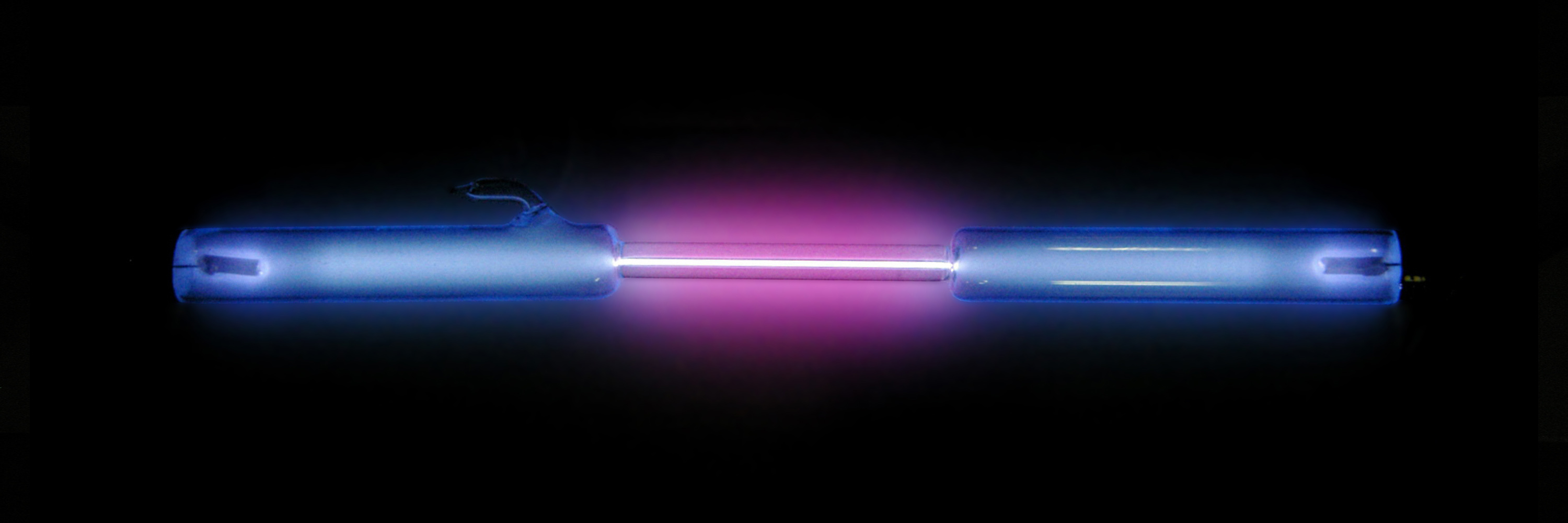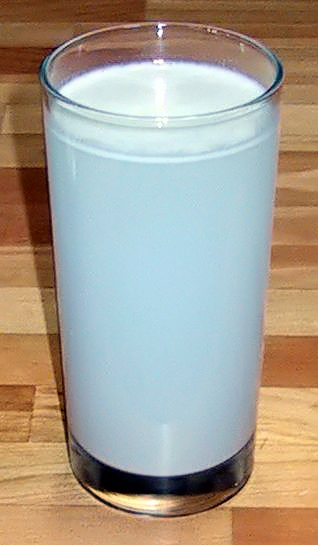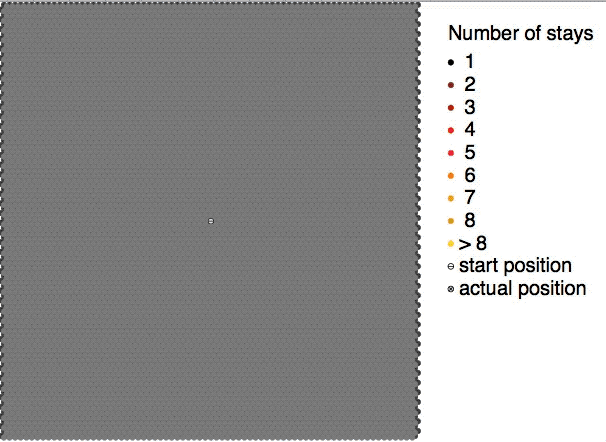|
Soft Matter
Soft matter or soft condensed matter is a type of matter that can be deformed or structurally altered by thermal or mechanical stress which is of similar magnitude to thermal fluctuations. The science of soft matter is a subfield of condensed matter physics. Soft materials include liquids, colloids, polymers, foams, gels, granular materials, liquid crystals, flesh, and a number of biomaterials. These materials share an important common feature in that predominant physical behaviors occur at an energy scale comparable with room temperature thermal energy (of order of kT), and that entropy is considered the dominant factor. At these temperatures, quantum aspects are generally unimportant. When soft materials interact favorably with surfaces, they become squashed without an external compressive force. Pierre-Gilles de Gennes, who has been called the "founding father of soft matter," received the Nobel Prize in Physics in 1991 for discovering that methods developed f ... [...More Info...] [...Related Items...] OR: [Wikipedia] [Google] [Baidu] |
Matter
In classical physics and general chemistry, matter is any substance that has mass and takes up space by having volume. All everyday objects that can be touched are ultimately composed of atoms, which are made up of interacting subatomic particles. In everyday as well as scientific usage, ''matter'' generally includes atoms and anything made up of them, and any particles (or combination of particles) that act as if they have both rest mass and volume. However it does not include massless particles such as photons, or other energy phenomena or waves such as light or heat. Matter exists in various states (also known as phases). These include classical everyday phases such as solid, liquid, and gas – for example water exists as ice, liquid water, and gaseous steam – but other states are possible, including plasma, Bose–Einstein condensates, fermionic condensates, and quark–gluon plasma. Usually atoms can be imagined as a nucleus of protons and neu ... [...More Info...] [...Related Items...] OR: [Wikipedia] [Google] [Baidu] |
Pierre-Gilles De Gennes
Pierre-Gilles de Gennes (; 24 October 1932 – 18 May 2007) was a French physicist and the Nobel Prize laureate in physics in 1991. Education and early life He was born in Paris, France, and was home-schooled to the age of 12. By the age of 13, he had adopted adult reading habits and was visiting museums. Later, de Gennes studied at the École Normale Supérieure. After leaving the ''École'' in 1955, he became a research engineer at the Saclay center of the Commissariat à l'Énergie Atomique, working mainly on neutron scattering and magnetism, with advice from Anatole Abragam and Jacques Friedel. He defended his Ph.D. in 1957 at the University of Paris. Career and research In 1959, he was a postdoctoral research visitor with Charles Kittel at the University of California, Berkeley, and then spent 27 months in the French Navy. In 1961, he was assistant professor in Orsay and soon started the Orsay group on superconductors. In 1968, he switched to studying liquid crysta ... [...More Info...] [...Related Items...] OR: [Wikipedia] [Google] [Baidu] |
Macromolecule
A macromolecule is a "molecule of high relative molecular mass, the structure of which essentially comprises the multiple repetition of units derived, actually or conceptually, from molecules of low relative molecular mass." Polymers are physical examples of macromolecules. Common macromolecules are biopolymers (nucleic acids, proteins, and carbohydrates). and polyolefins (polyethylene) and polyamides (nylon). Synthetic macromolecules Many macromolecules are synthetic polymers (plastics, synthetic fibers, and synthetic rubber. Polyethylene is produced on a particularly large scale such that ethylene is the primary product in the chemical industry. Macromolecules in nature * Proteins are polymers of amino acids joined by peptide bonds. * DNA and RNA are polymers of nucleotides joined by phosphodiester bonds. These nucleotides consist of a phosphate group, a sugar ( ribose in the case of RNA, deoxyribose in the case of DNA), and a nucleotide base (either adenine, guan ... [...More Info...] [...Related Items...] OR: [Wikipedia] [Google] [Baidu] |
Covalent Bond
A covalent bond is a chemical bond that involves the sharing of electrons to form electron pairs between atoms. These electron pairs are known as shared pairs or bonding pairs. The stable balance of attractive and repulsive forces between atoms, when they share electrons, is known as covalent bonding. For many molecules, the sharing of electrons allows each atom to attain the equivalent of a full valence shell, corresponding to a stable electronic configuration. In organic chemistry, covalent bonding is much more common than ionic bonding. Covalent bonding also includes many kinds of interactions, including σ-bonding, π-bonding, metal-to-metal bonding, agostic interactions, bent bonds, three-center two-electron bonds and three-center four-electron bonds. The term "covalence" was introduced by Irving Langmuir in 1919, with Nevil Sidgwick using "co-valent link" in the 1920s. Merriam-Webster dates the specific phrase ''covalent bond'' to 1939, recognizing its first known ... [...More Info...] [...Related Items...] OR: [Wikipedia] [Google] [Baidu] |
Nobel Prize In Chemistry
The Nobel Prize in Chemistry () is awarded annually by the Royal Swedish Academy of Sciences to scientists in the various fields of chemistry. It is one of the five Nobel Prizes established by the will of Alfred Nobel in 1895, awarded for outstanding contributions in chemistry, physics, literature, peace, and physiology or medicine. This award is administered by the Nobel Foundation and awarded by the Royal Swedish Academy of Sciences on proposal of the Nobel Committee for Chemistry, which consists of five members elected by the Academy. The award is presented in Stockholm at an annual ceremony on December 10th, the anniversary of Nobel's death. The first Nobel Prize in Chemistry was awarded in 1901 to Jacobus Henricus van 't Hoff, of the Netherlands, "for his discovery of the laws of chemical dynamics and osmotic pressure in solutions". From 1901 to 2024, the award has been bestowed on a total of 195 individuals. The 2024 Nobel Prize in Chemistry was awarded to Demis Hassabis ... [...More Info...] [...Related Items...] OR: [Wikipedia] [Google] [Baidu] |
Hermann Staudinger
Hermann Staudinger (; 23 March 1881 – 8 September 1965) was a German organic chemist who demonstrated the existence of macromolecules, which he characterized as polymers. For this work he received the 1953 Nobel Prize in Chemistry. He is also known for his discovery of ketenes and of the Staudinger reaction. Staudinger, together with Leopold Ružička, also elucidated the molecular structures of pyrethrin I and II in the 1920s, enabling the development of pyrethroid insecticides in the 1960s and 1970s. Early work Staudinger was born in 1881 in Worms. Staudinger, who initially wanted to become a botanist, studied chemistry at the University of Halle, at the TH Darmstadt and at the LMU Munich. He received his "Verbandsexamen" (comparable to Master's degree) from TH Darmstadt. After receiving his Ph.D. from the University of Halle in 1903, Staudinger qualified as an academic lecturer at the University of Strasbourg in 1907. He was supported in his work by his new wife Dora ... [...More Info...] [...Related Items...] OR: [Wikipedia] [Google] [Baidu] |
Otto Lehmann (physicist)
Otto Lehmann (13 January 1855 in Konstanz, Germany – 17 June 1922 in Karlsruhe) was a German physicist and "father" of liquid crystal. Life Otto was the son of Franz Xavier Lehmann, a mathematics teacher in the Baden-Wurtemberg school system, with a strong interest in microscopes. Otto learned to experiment and keep records of this findings. Between 1872 and 1877, Lehmann studied natural sciences at the University of Strassburg and obtained the Ph.D. under crystallographer Paul Groth. Otto used polarizers in a microscope so that he might watch for birefringence appearing in the process of crystallization. Initially becoming a school teacher for physics, mathematics and chemistry in Mülhausen ( Alsace-Lorraine), he started university teaching at the RWTH Aachen University in 1883. In 1889, he succeeded Heinrich Hertz as head of the Institute of Physics in Karlsruhe. Lehmann received a letter from Friedrich Reinitzer asking for confirmation of some unusual observations. As D ... [...More Info...] [...Related Items...] OR: [Wikipedia] [Google] [Baidu] |
Friedrich Reinitzer
Friedrich Richard Reinitzer (25 February 1857 in Prague – 16 February 1927 in Graz) was an Austrian botanist and chemist. In late 1880s, experimenting with cholesteryl benzoate, he discovered properties of liquid crystals (named later by Otto Lehmann). Reinitzer was born into a German Bohemian family in Prague. He studied chemistry at the German technical university in Prague; in 1883 he was habilitated there as a private docent. From 1888-1901 he was a professor at Karl-Ferdinands-Universität, then professor at technical university in Graz. During 1909 - 1910 he served as the rector of the university. While at Karl-Ferdinands-Universität in 1888 he discovered a strange behaviour of what would later be called liquid crystals. For the explanation of their behaviour he collaborated with the physicist Otto Lehmann from Aachen. The discovery received plenty of attention at the time but no practical uses were apparent and the interest dropped soon. Selected works * F. Reini ... [...More Info...] [...Related Items...] OR: [Wikipedia] [Google] [Baidu] |
KT (energy)
''kT'' (also written as ''k''B''T'') is the product of the Boltzmann constant, ''k'' (or ''k''B), and the temperature, ''T''. This product is used in physics as a scale factor for energy values in molecular-scale systems (sometimes it is used as a unit of energy), as the rates and frequencies of many processes and phenomena depend not on their energy alone, but on the ratio of that energy and ''kT'', that is, on (see Arrhenius equation, Boltzmann factor). For a system in equilibrium in canonical ensemble, the probability of the system being in state with energy ''E'' is proportional to e^ . More fundamentally, ''kT'' is the amount of heat required to increase the thermodynamic entropy of a system by ''k''. In physical chemistry, as kT often appears in the denominator of fractions (usually because of Boltzmann distribution), sometimes '' β'' = is used instead of ''kT'', turning e^ into . ''RT'' ''RT'' is the product of the molar gas constant, ''R'', and the temperature, ... [...More Info...] [...Related Items...] OR: [Wikipedia] [Google] [Baidu] |
Fluid
In physics, a fluid is a liquid, gas, or other material that may continuously motion, move and Deformation (physics), deform (''flow'') under an applied shear stress, or external force. They have zero shear modulus, or, in simpler terms, are Matter, substances which cannot resist any shear force applied to them. Although the term ''fluid'' generally includes both the liquid and gas phases, its definition varies among branches of science. Definitions of ''solid'' vary as well, and depending on field, some substances can have both fluid and solid properties. Non-Newtonian fluids like Silly Putty appear to behave similar to a solid when a sudden force is applied. Substances with a very high viscosity such as Pitch (resin), pitch appear to behave like a solid (see pitch drop experiment) as well. In particle physics, the concept is extended to include fluidic matters other than liquids or gases. A fluid in medicine or biology refers to any liquid constituent of the body (body fluid ... [...More Info...] [...Related Items...] OR: [Wikipedia] [Google] [Baidu] |
Suspension (chemistry)
In chemistry, a suspension is a heterogeneous mixture of a fluid that contains solid particles sufficiently large for sedimentation. The particles may be visible to the naked eye, usually must be larger than one micrometer, and will eventually settle, although the mixture is only classified as a suspension when and while the particles have not settled out. Properties A suspension is a heterogeneous mixture in which the solid particles do not dissolve, but get suspended throughout the bulk of the solvent, left floating around freely in the medium. The internal phase (solid) is dispersed throughout the external phase (fluid) through mechanical agitation, with the use of certain excipients or suspending agents. An example of a suspension would be sand in water. The suspended particles are visible under a microscope and will settle over time if left undisturbed. This distinguishes a suspension from a colloid, in which the colloid particles are smaller and do not settle. ... [...More Info...] [...Related Items...] OR: [Wikipedia] [Google] [Baidu] |
Brownian Motion
Brownian motion is the random motion of particles suspended in a medium (a liquid or a gas). The traditional mathematical formulation of Brownian motion is that of the Wiener process, which is often called Brownian motion, even in mathematical sources. This motion pattern typically consists of Randomness, random fluctuations in a particle's position inside a fluid sub-domain, followed by a relocation to another sub-domain. Each relocation is followed by more fluctuations within the new closed volume. This pattern describes a fluid at thermal equilibrium, defined by a given temperature. Within such a fluid, there exists no preferential direction of flow (as in transport phenomena). More specifically, the fluid's overall Linear momentum, linear and Angular momentum, angular momenta remain null over time. The Kinetic energy, kinetic energies of the molecular Brownian motions, together with those of molecular rotations and vibrations, sum up to the caloric component of a fluid's in ... [...More Info...] [...Related Items...] OR: [Wikipedia] [Google] [Baidu] |





